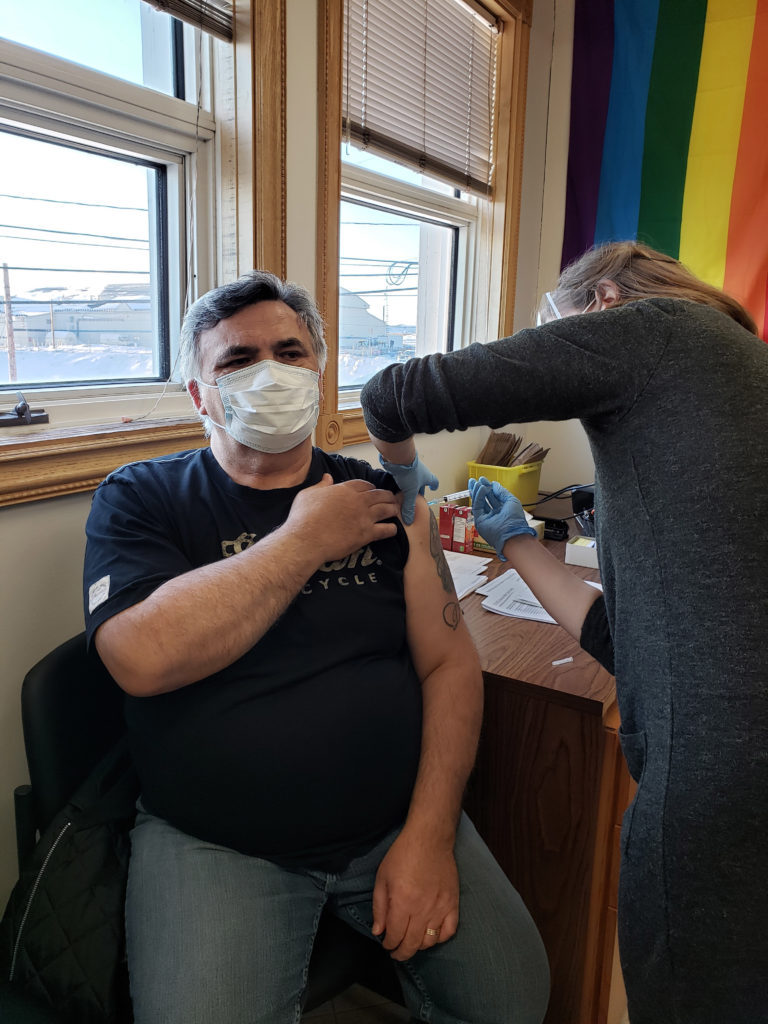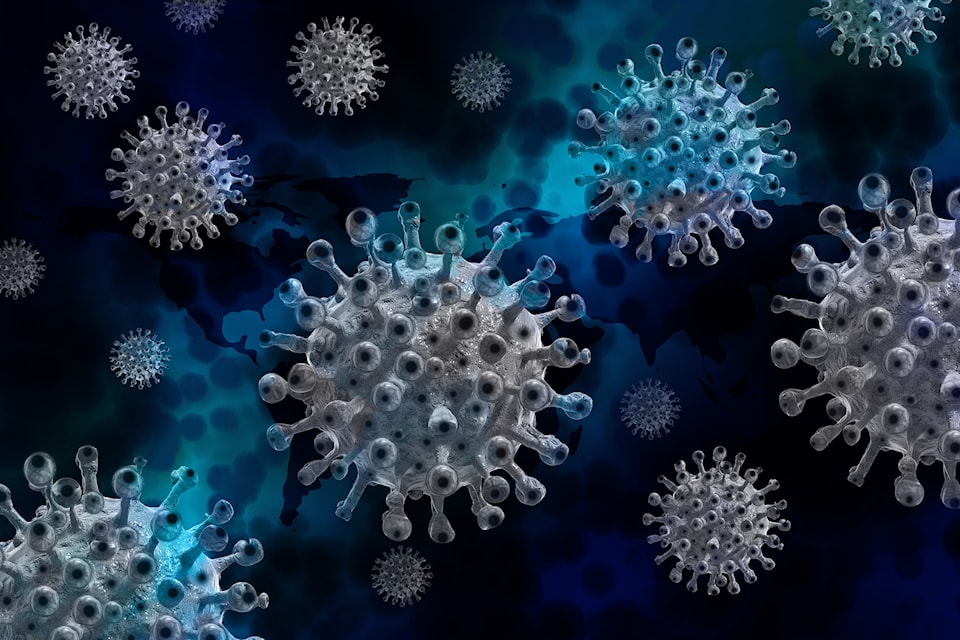On Nov. 6, 2020 the Government of Nunavut (GN) announced the territory’s first confirmed case of Covid-19 in Sanikiluaq, which started a community-wide lockdown that same day.
“Effective noon today all travel to and from the Belcher Islands, including the Hamlet of Sanikiluaq, by any means, is restricted,” said Dr. Michael Patterson, Nunavut’s Chief Public Health Officer.
One other case within the same household was confirmed, however viral spread was contained to just the one household.
The following week the virus was discovered in the Kivalliq region with a positive case in Rankin Inlet being confirmed on Nov. 11. Contact tracing efforts like with Sanikiluaq promptly began.
Residents of Rankin Inlet were asked to remain at home as much as possible and limit contact with others, including family outside of their household.
"It is critical that health measures are strictly followed by everyone to quickly contain any potential spread in the community,” said Patterson at the time.
By Nov. 13, Covid-19 was confirmed in Arviat, and with “an abundance of caution” said Patterson, the entire Kivalliq region shut down except for essential services.
At the time Premier Joe Savikataaq urged Nunavummiut to maintain public health measures and voiced support for everyone in Kivalliq.
“Please know we are with you, we’re sending you strength and our government is ready to help. Stay well and care for one another safely.”
'How quickly (it) spreads'
The number of active cases in the Kivalliq had expanded to 60 in total by Nov. 17. Whale Cove became the third affected community, with eight cases being diagnosed there.
Cases in Arviat continued to rise at this point, with 46 infected and clear signs of community transmission having occurred. The cases in Whale Cove were linked to the outbreak in Arviat and four active cases were present in Rankin Inlet at this point.
“The last week has shown us just how quickly Covid-19 spreads. This rate and reach of transmission will continue to grow if we don’t each do our part,” said Patterson.
By Nov. 23 the case numbers rose up to 132, with 18 people in Rankin Inlet by then testing positive while Whale Cove stood at 16 active cases and the majority of new cases, 98, in Arviat.
The total number of active cases in Arviat peaked at 153 on Nov.25 according to the Department of Health.
The two cases in Sanikiluaq at this point had recovered. Monitoring continued for the community and the outbreak was officially declared over Dec. 18, 28 days after the final recovery.
With more and more recoveries taking place lockdown restrictions in Nunavut outside of Arviat were eased Dec. 1, though some additional public health measures remained in Rankin Inlet and Whale Cove.
Recoveries began to outpace new cases by Dec. 7 with 168 of 219 cases recovered and by Dec. 8 all Whale Cove infections were considered recovered. Arviat reported 44 active cases remaining by the same date.
On Dec. 23 the virus had resurfaced in Whale Cove with one positive test result coming in, it was however contained to households.
Vaccine rollout in the new year
The first shipment of the Moderna Covid-19 vaccine landed in Iqaluit on Dec. 30. The rollout plan included full vaccination of all adult Nunavummiut in the majority of the communities, and priority age groups in the capital.

“I’m thrilled to witness the arrival of the first #COVID19 vaccines in Nunavut!” wrote the Premier on social media.
On Jan. 6, the first Nunavummiuq received the vaccine. Josephee Adams, 70, at the Iqaluit Elders’ Centre was the first person in Nunavut to be vaccinated.
As the new year dawned things were looking better for Nunavummiut as the remaining cases in Arviat and Whale Cove continued to make recoveries.
By Jan. 11 two weeks had passed with no new cases arising in Arviat and Whale Cove. Restrictions then eased in the two hamlets.
“While this is good news, I want to remind everyone that it will take until the end of January to declare the outbreaks over. For everyone’s health and safety, it is important we continue to follow the public health measures in place,” said Patterson.
By the beginning of February more than 5,000 people had received their first dose against the coronavirus.
A false positive on an inbound flight from Ottawa to Iqaluit on Jan. 20 led to the passengers of Canadian North flight FAB101 being temporarily detained at the airport until later that afternoon when the presumptive case was cleared.
Second Arviat outbreak
On Jan. 22 the GN announced Covid-19 had resurfaced in Arviat.
The number of active cases in Arviat would rise to 17 by Jan 25. Numbers fluctuated with recoveries and small pockets of active cases being reported with a peak of 29 active cases, by Feb. 19. Dr. Patterson urged people to limit their contacts during this time.

On Feb. 24 the Hamlet of Arviat declared a state of local emergency that extended to two weeks in an effort to stop the spread of the virus.
A curfew was enacted from 10 p.m. to 6 a.m. each night, with all retail and food service establishments shuttered and only one person per household permitted to shop for essential goods.
Full-time in-class learning returned to two of three Nunavut regions on Feb. 25 as restrictions were eased in Qikiqtani and Kitikmeot schools.
“Based on the current risk of Covid-19 within the territory, we will ease some of our Covid-19 restrictions and take a step forward on Nunavut’s Path,” said Patterson.
On the same day four people recovered from the coronavirus in Arviat.
The number of cases in the Kivalliq community would ebb and flow over the following week as the beginning of March saw 11 recoveries and one new case on March 1, then another 10 new cases three days later.
Dr. Patterson said the situation in Arviat, despite recent new cases, was under control on March 5. On March 10 restrictions eased in Arviat after the community endured 118 days of lockdown.

“I want to assure all Nunavummiut that this outbreak remains contained, and the Moderna vaccine is proving effective.”
Restrictions are eased
Four days later public health restrictions were eased in Arviat, with daycares reopening, schools allowing part-time in-class learning in rotations. Businesses and workplaces were able to reopen. The number of active cases in Arviat would follow a downward trajectory over the following couple of weeks.
On March 17, the Government of Manitoba transferred 12 Covid-19 case counts of Nunavummiut previously diagnosed in the province to Nunavut, which included three deaths, these were neither new nor current cases.
The GN reported zero active cases in Arviat on March 20 as the final two people made recoveries that day.
The Premier congratulated the community, “Way to go Arviarmiut! Your strength and hard work has paid off.”
As of March 24, there are no active cases of Covid-19 in Nunavut.
